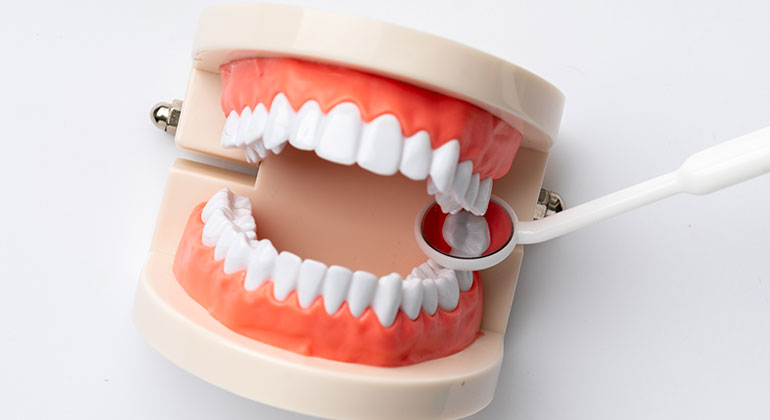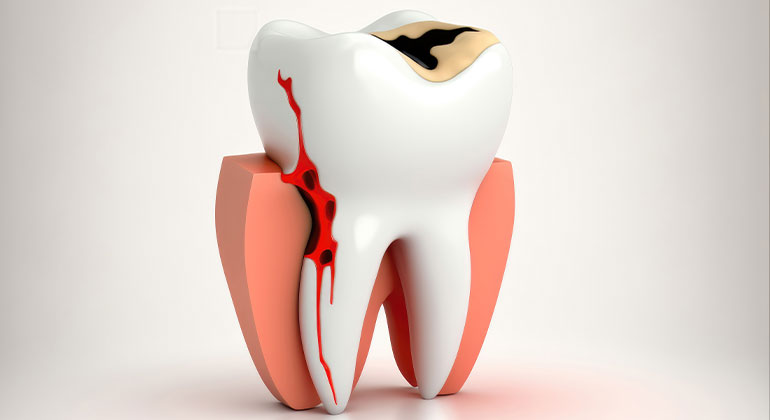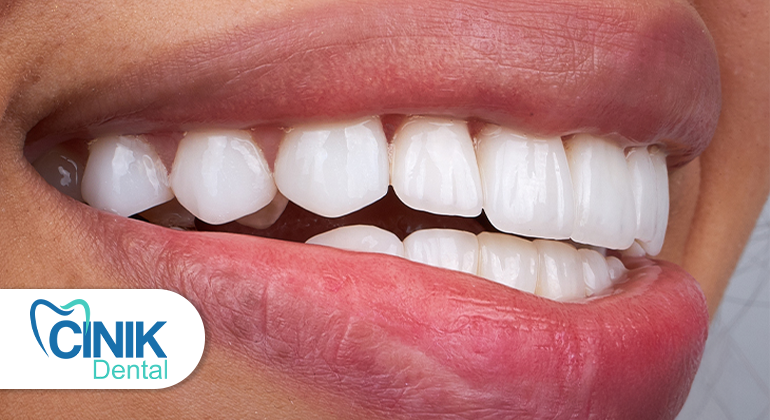Why Do Teeth Decay – What Are the Ways to Get Rid of Decay?
What is teeth decay? In short, tooth decay is the deterioration of the hard structure of the tooth by certain bacteria in the mouth due to certain factors. Teeth decay is caused by the decay of the tooth surface caused by acid and bacteria.
The factors necessary for tooth decay to occur can be listed as follows;
- Bacteria Cariogenic (caries-causing) bacteria in the mouth produce acids by consuming foods containing sugar and carbohydrates. These acids weaken the tooth enamel and cause decay.
- Sugar and carbohydrates: Foods that encourage bacteria to produce acids contain sugar and carbohydrates. Therefore, excess consumption of sugary and starchy foods can increase the risk of tooth decay.
- Inadequate Dental Hygiene: Failure to clean teeth regularly and neglecting brushing and flossing can cause bacterial plaque to accumulate in the mouth and cause tooth decay.
- Diet and Eating Habits: An unbalanced or poor diet can have a negative impact on the health of the teeth. Inadequate intake of calcium, phosphorus and other minerals can lead to weakened tooth enamel.
- Fluoride Deficiency: Fluoride is a mineral that strengthens tooth enamel and protects against acid attacks. Fluoride deficiency can increase the risk of tooth decay.
- Genetic Factors: Genetic factors can have an impact on a person’s dental health. Some people may be genetically predisposed to more tooth decay.
The earlier the treatment of tooth decay begins, the simpler and more effective it is. This is why it is important to attend regular dental visits and maintain good dental hygiene habits.

What should be done to prevent tooth decay?
You can take the following measures to prevent tooth decay:
- Regular Tooth Brushing:
– Brush your teeth at least twice a day (morning and evening). Brushing should take at least 2 minutes. Apply lightly without pressing.
– Pay attention to your gums and tongue while brushing your teeth.
– After using the toothbrush, rinse the toothbrush thoroughly and let it air dry.
– Change your brush regularly (every 3-4 months).
- Flossing:
Use dental floss to remove food debris between teeth and prevent plaque buildup.
You can get information about the method of flossing from your dentist.
- Toothpaste Containing Fluoride:
Fluoride strengthens tooth enamel and protects against acid attacks. Use toothpastes containing fluoride.
- Regular Dental Checkups:
It is important to see your dentist for regular check-ups. Tooth decay can be treated more easily if it is detected at an early stage.
- Healthy Eating Habits:
Limit the consumption of foods containing sugar and starch. Sugary snacks and carbonated drinks in particular, can lead to tooth decay.
Eating a balanced diet with more fiber, fruits, and vegetables supports dental health.
- Dental Health Products:
You can reduce the number of bacteria in the mouth by using mouthwash or mouthwash water. However, these products should not replace regular brushing and flossing.
- Preventing Dry Mouth:
Dry mouth can lead to tooth decay. You can take measures such as drinking enough water and chewing sugar-free gum to increase saliva production.
- Dental Preventive Treatments:
If your dentist recommends it, you may want to consider dental preventive treatments. These treatments may include fluoride applications and fissure sealants.

How Does Tooth Decay Occur?
Symptoms of tooth decay include:
Pain or sensitivity: pain or sensitivity is felt in the tooth when hot, cold, or sweet foods and drinks are consumed.
- Color changes: the appearance of white, brown, or black spots on the tooth.
- Pits or cavities on the tooth surface.
- Weakening or fracture of the tooth: as decay progresses, the tooth’s enamel layer may weaken, and teeth may break or crack.
To protect your dental health, follow your dentist’s advice and seek professional help immediately if you notice symptoms. https://cinikdental.com/

How to recognize tooth decay?
The following steps are followed for the diagnosis and treatment of tooth decay:
Diagnosis:
Visual Examination: Your dentist can visually examine the tooth decay by looking into your mouth during the examination. He/she will have information about the color, size and location of the decay.
X-rays: X-rays can be taken to determine whether tooth decay has spread to deeper tissues or to determine the extent of decay inside the tooth. This is important for detecting hidden decay.
Anamnesis: Your dentist can gather more information by listening to your symptoms, such as toothache or sensitivity.

Treatment:
- Filling: Small to medium-sized cavities are treated with a filling to remove the decay and fill the cavity. The filling material is usually composite resin or amalgam.
- Root Canal Treatment: Root canal treatment may be required when the pulp (nerve and vascular tissue) of the tooth is reached or if there is a severe infection. In this procedure, the inside of the tooth is cleaned, disinfected, and filled.
- Dental Veneers: When tooth decay has affected a large part of the tooth or the tooth has become weak, a dental crown may be required. These procedures restore the appearance and function of the tooth.
- Tooth Extraction: If the condition of your tooth is too advanced or too bad to be saved, the dentist may extract the tooth.
- Professional Cleaning: Your dentist will recommend regular professional dental cleanings to reduce the risk of cavities and maintain your dental health.
You can trust the Cinik Dental health team for a healthy smile and have a happy smile with dental aesthetics.





Leave a Reply